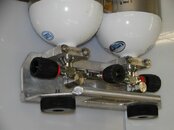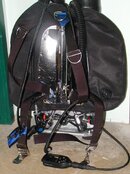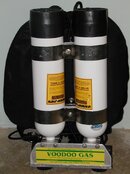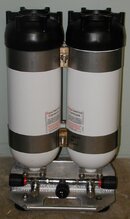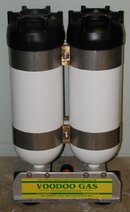BobbyT22
Contributor
Hello Everyone. I recently read about a technique for use with manifolded doubles with an isolation valve called "Progressive Equalization". Briefly, it involves diving manifolded doubles with the isolator closed, giving you in essence independent doubles. During the dive you breathe from one tank only, and leave the other alone for redundancy. When you reach a pre-determined level on the designated tank (say every 1000 psi), you open the isolator to equalize the tanks, then close it again. I think this technique might have applications for solo diving. I did a cursory search of this forum and did not find any threads describing this technique as an alternative to either independent doubles or a dedicated pony. Does anyone here use this technique for solo diving? It seems to me that it could be a useful way to get the benefit of independent back mounted doubles, using tank equalization instead of reg switches to maintain trim. Thoughts?



